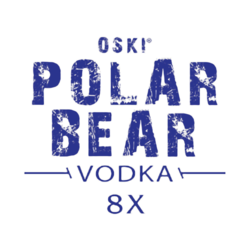© 2020 - 2025 POLAR BEAR VODKA. ALL RIGHTS RESERVED.
Privacy Policy |
Terms of Use |

Vodka is one of the most simple alcohols out there, but that doesn’t mean anyone can whip up a batch of it pronto. It may be simple, but, when made wrong, vodka can be dangerous. In worst cases, a poorly made vodka can lead to death.
So, how do vodka companies go about making this signature, clear, fragrance-less, colorless drink?
Step 1 - Gathering Ingredients
The ingredients, and the way those ingredients are treated, can be the cause of a good, bad, or deadly vodka. Take potatoes for instance. If you don’t get healthy potatoes, and/or if you don’t clean them properly, imperfections can find their way into the finished product, causing a bad taste, texture, or chemical makeup.
Step 2 - Fermentation
Yeast + sugar = alcohol. So, the natural sugars in the base ingredient will be ‘eaten’ by the yeast. This is how our beloved alcohol is born. This process can take 3 days to a few weeks depending on the ingredients used and the desired ABV.
Step 3 - Distillation
You don’t have to fear any methanol in today’s vodka selections, but this is the reason why amateur homemade vodkas and super low-quality vodkas should be avoided -- among other reasons.
Distilling a vodka means that you are gradually giving it a higher ABV, as well as making it cleaner. Vodka has an incredibly high ABV -- 40%! To get that high number, the alcohol created by the yeast has to be separated from the water and yeast waste using distillation -- evaporation and condensation.
After a few rounds of the distillation process, the purest alcohol has been amassed and separated. This pure alcohol is called the heart. Each additional process of distilling gets rid of the head and tail, aka the top and bottom of the batch. The head and tail don’t taste as good as the heart, and are often discarded.
How Vodka is Made?
How Vodka is Made?
What About Flavored Vodkas?
Less natural flavorings can also be used, and are found as a syrup or flavored liquid that gets mixed into the vodka.
To Wrap Up
If you’re feeling inspired to dip your toe into the world of alcohol making, and want to make your own vodka, go for it! Just remember to use the best ingredients and put it through multiple distilling processes to make sure it’s safe to drink.

